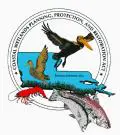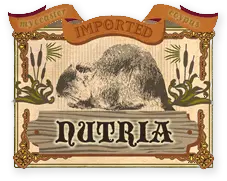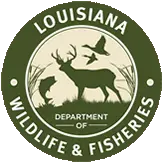Background
Nutria, native to South America, is an introduced and invasive semi-aquatic rodent in coastal Louisiana resulting from escapes and possible releases from nutria farms in the 1930s. The decline in fur trapping activity since the mid-1980s has resulted in over population of nutria. Annual surveys have revealed that approximately 80,000 acres of Louisiana coastal wetlands can be impacted at any one point in time. Since the introduction of the Coastwide Nutria Control Program, the estimate of impacted acres has been reduced to 6,008 acres at the end of the 2014-2015 season. Nutria herbivory damage is ongoing, and many damaged sites are not likely to recover naturally. Without comprehensive management of nutria herbivory damage, the stability of the Louisiana coastal ecosystem is threatened.

The Coastwide Nutria Control Program is funded through The Coastal Wetlands Planning, Protection, and Restoration Act (CWPPRA)
Proposed Solution
The Coastwide Nutria Control Program consists of an economic incentive payment of $6 per nutria tail delivered by registered participants to collection centers established in coastal Louisiana. The goal of the Program is to encourage the harvest of up to 400,000 nutria annually from coastal Louisiana. This program is funded by Coastal Wetlands Planning Protection and Restoration Act through Louisiana Department of Natural Resources and Natural Resources Conservation Service.
Click here to view maps of damage and harvest areas.
Click here for annual program updates
Click here for application page
Program Area
Coastal Louisiana, bounded on the north by Interstate 10 from LA-TX line to Baton Rouge, Interstate 12 from Baton Rouge to Slidell, and Interstate 10 from Slidell to LA-MS line.
Participant Application Process
- Participants must acquire a valid Louisiana Trapping License.
- Participants must obtain permission to trap/hunt in the Program Area from an appropriate private, state, or federal landowner.
- Participants are required to submit a COMPLETE, legal property description for each property to be trapped / hunted. Participants are also required to send a map outlining each property to be trapped / hunted.
- Participants are required to submit a completed W-9 Federal Tax Form with the Coastwide Nutria Control Program Application.
- Applications submitted to the department or its contractor by October 1 shall be processed by the opening of trapping season (Nov. 20 – Mar.31). Applications submitted to the department or its contractor after October 1 shall be processed in the order received.
- Applications listing only waterbodies, without signature of adjacent landowner(s) or designated representative(s), shall be considered incomplete and will be returned to the applicant.
- For applications determined to be complete and valid, the participant shall be notified by mail and provided a Nutria Control Program Registration Number.
Program Protocol
- Participants shall deliver to designated collection centers only fresh or well-preserved (iced or frozen), severed nutria tails (greater than 7 inches in length) in a manner that allows counting of individual tails (e.g., tails can not be frozen together in a block).
- Participants or a designated assistant must present Nutria Control Program Registration Number and proper identification. Participant shall indicate on a map of their property where animals were taken and indicate method of take and carcass use.
- Valid nutria tails will be counted and participant will sign a receipt/voucher. Participant will be paid in a timely manner via a check delivered by mail.
- Nutria tails delivered by unregistered individuals, tails from animals from outside the Program Area, or animals collected outside of the open trapping season shall not be accepted.
- Nutria may be taken by any legal method except that if taken with a shotgun, steel shot must be used.
- Participants are required to remove carcasses from the trapping/hunting area or, if carcasses are not sold whole, they must be placed in such a manner as to prohibit feeding on the carcasses by birds, including southern bald eagles. Carcasses may be buried, placed in heavy overhead vegetation or concealed by any other means necessary to prevent consumption by birds.
- Collection sites will be located in the following parishes: Cameron, Vermilion, St. Mary, Terrebonne, Jefferson, and St. Bernard.
- Collections will be made throughout the Trapping Season (Nov. 20 – Mar. 31), or until the target of 400,000 nutria is reached. Collections will occur about once per week at each station. Exact location, specific dates and times of collections will be established and advertised for each collection center.
- Any violation of regulations is a class 2 violation and conviction may result in disqualification from the program.

